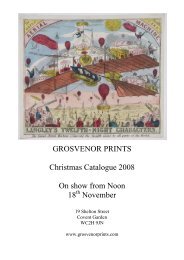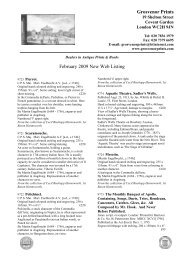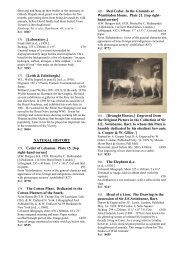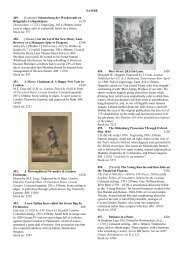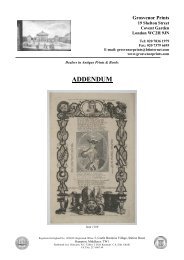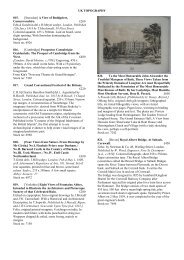Create successful ePaper yourself
Turn your PDF publications into a flip-book with our unique Google optimized e-Paper software.
1. The Anatomy Of<br />
The Horse.<br />
Including A Particular Description of the<br />
Bones, Cartilages, Muscles, Fascias,<br />
Ligaments, Nerves, Arteries, Veins, and<br />
Glands. In<br />
Eighteen<br />
Tables, alll done from<br />
Nature. By George Stubbs, Painter.<br />
[Designed and etched by George Stubbs.] London,<br />
Printed by J. Purser, for the Author. 1766.<br />
Large oblong<br />
folio, half-calf gilt, rebacked, Spanish<br />
hand-made marbled boards c.1804, marbled endpapers,<br />
within modern box; title + (i)+ pp.47; 24 etched plates,<br />
each c.375 x 480mm. Binding generally<br />
scuffed and<br />
rubbed (unrestored), spine<br />
rebound. Spots of residue<br />
from expertly<br />
removed mould visible in<br />
upper marginn<br />
of several plates. This residue particularly prominent in<br />
Tabs. IX and<br />
XI, encroaching into platee Tabs. XIII and<br />
XIV. Vertical 'scuff' line from upper edge of paper c.<br />
5cm into plate centre left Tab. XII. Diagonal crease<br />
though top edge of upper right corner off sheet Tab.<br />
XIV, well outside plate. Lower right corner and lower<br />
left corner extremities missing Tabs. I and a key<br />
respectively ('skeleton').<br />
£19500<br />
Complete volume of this masterpiece off equine<br />
anatomical exploration by George Stubbs [1724 -<br />
1806]. It takes the form of<br />
what are effectively two sets<br />
of etchings combined. The<br />
first part, of four plates,<br />
deals exclusively with the skeletal structure of the<br />
horse and comprises three finished etchings labelled<br />
Tabs. I, II and III, and one<br />
key plate corresponding too<br />
Tab I. The second part explores the muscles, fascias,<br />
ligaments, nerves, veins, glands and cartilages. This<br />
consists of 15<br />
etchings, Tabs. I - XV, nos. I - V each<br />
with corresponding separate key plates. This volume is<br />
compiled from two separate first editions. The binding<br />
and letterpress sheets, along with four plates, come<br />
from a copy ex-Royal Veterinary College. The platess<br />
as follows; Tabs I (Lennox-Boyd 169), III (173), IV<br />
(175) and the final plate XV (188). The remainder of<br />
the plates comee from a private collection in i the West<br />
Country. Thesee etchings are fine impressions on<br />
contemporary laid paper, on which only the earliest<br />
copies were printed. They represent gloriously precise,<br />
detailed and accurate anatomical observations which<br />
set the standardd in veterinaryy science for a century.<br />
They certainly possess p a 'finee exactness and austere<br />
beauty' that 'give them a timeless beauty' (Ray).(<br />
Stubbs<br />
says in his introduction 'To The Reader': 'all the figures<br />
in<br />
it are drawn from nature, for which purpose I<br />
dissected a great number of horses'. 42 original<br />
sketches from Stubbs's S dissections between 1756 and<br />
1759 while he was w at Horkstow in Lincolnshire survive<br />
in<br />
the library off the Royal Academy. These form the<br />
basis of this great work, an undertaking too demanding<br />
it seems for some of the premier engraverss of the time,<br />
such as Charless Grignion, who declined Stubbs's<br />
approaches. The task took upp the following six years,<br />
all the while thee artist refining his rather rudimentary<br />
engraving technique. The impact of the publication of<br />
the work was immediate andd considerable, not only in<br />
scientific terms, but in an agee of Enlightenment when<br />
the aesthetic ideal was closely connected with<br />
observation of the t natural world, the artistic<br />
community derived great benefit also.<br />
Freshly appreciated and re-discovered in the 20th<br />
century, Georgee Stubbs is now widely considered to be<br />
the pre-eminentt animal painter of the 18th<br />
century.<br />
Throughout hiss life Stubbs displayed an inquisitive<br />
scientific temperament, and he had a life-long interest<br />
in<br />
deconstructing anatomy, one of his earliest works<br />
ncluding a set of illustrations for a textbook on<br />
midwifery which was published in 1751.<br />
Lennox-Boyd: 1661<br />
- 188.<br />
[Ref: 5777]




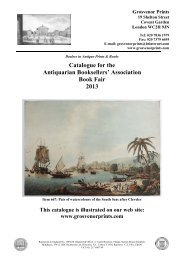
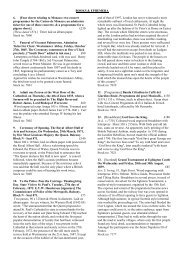
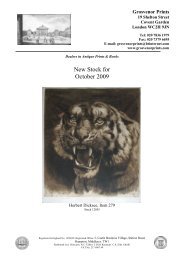
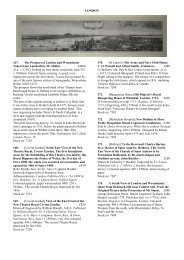
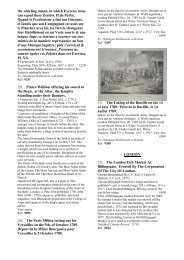
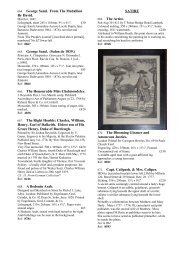
![FOREIGN TOPOGRAPHY 661. [Niagara] The ... - Grosvenor Prints](https://img.yumpu.com/38432042/1/184x260/foreign-topography-661-niagara-the-grosvenor-prints.jpg?quality=85)
